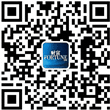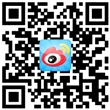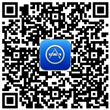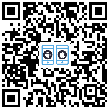如何在面试时使用平板电脑



|
????亲爱的安妮:请帮我们解决一个争论。我和一个朋友都在找新工作。我参加过许多次面试,每次,我都会把手机、笔记本电脑等留在汽车里。我认为,带着这些设备参加面试,会给人留下粗鲁和不专业的印象,你没有切断任何潜在干扰,看起似乎对与面试官交流不太感兴趣。 ????但我的朋友却说,这是一种老观念。他认为,带手机参加面试是可以接受的,因为你可能正在等一个重要电话(来自办公室:我们都是项目经理),前提是事先向面试官解释一下,自己可能不得不随身携带手机。我俩谁的看法对?——C.C ????亲爱的C.C.:你是正确的,但有一点例外。沟通培训公司Communispond的CEO比尔?罗森塔尔表示:“面试是一个人或多个人尝试了解求职者的过程。”因此,尽管不断查看手机已经成为一种司空见惯的现象(最近一项研究发现,管理者每天查看智能手机的次数为平均45次),“但在面试过程中开着手机仍是一种无礼的行为,更不用说接电话了。”提前说明自己在等一个重要电话,并表示歉意,或许会有一点点帮助。但也可能于事无补。 ????但平板设备却是另外一回事。罗森塔尔说道:“使用平板设备,可以让求职者变得更强大,给面试官留下更深刻的印象。因为面试事实上就是交换信息的过程,有大量信息可以轻松在线获得,为什么不加以利用吗?”一图抵千言。例如,如果你是一名网页设计师,向面试官展示自己设计的网站,比尝试用语言去描述它,更有意义。 ????罗森塔尔表示:“不论你来自哪个领域,平板设备都可以为你提供支持,帮助你传达信息。你可以使用一个图表解释你实现某个目标的过程,或通过条形图,跟踪上一个项目的结果。你还可以展示照片。” ????他补充道,唯一的限制,“是信息的相关性。首先要确定希望面试官了解哪些与自己的工作有关的信息。你要将自己展示为一名有团队精神的人、团队领导者、善于解决问题的人,还是创新者、收入创造者?求职者只要明确了自我定位,就可以确定或创造一些展示内容,为自己所说的话提供支持。” ????当然,求职者也可以使用笔记本电脑,但平板设备更合适,因为它更小,因此“更容易来回传递。鼓励面试官触摸和滑动信息,这比干坐在那里说话更生动,也更有趣。如果面试官不止一人,他们可以传阅观看。” ????面试时使用平板设备有几个要点:首先,将平板设备放在“方便拿但不引人注目的地方。除非它可以帮助你回答一个问题或证明一个论点,否则不要拿出来,而且要征求面试官的同意,”罗森塔尔建议,“在谈话过程中找机会说:‘我可以给您看一下……’”然后,让面试官有机会在你开始解释之前,查看一下你提到的内容。在你表述时,眼睛要看着面试官,而不是屏幕。 |
????Dear Annie:Please settle a disagreement. A friend and I are both looking for new jobs right now, and I’ve been on a few interviews where I’ve left my cell phone, laptop, etc., in my car. I think bringing devices to an interview makes you look rude and unprofessional, as if you’re not interested enough in the discussion to cut out any possible distractions. ????My friend says that’s an old-school attitude. He thinks it’s fine to bring a cell phone to an interview if you are expecting an important call (from the office: we’re both project managers), as long as you explain ahead of time that you may have to take it. Who is right? —Curious in Cleveland ????Dear C.C.: You are, with one major exception. “An interview is one or more people trying to get to know you,” says Bill Rosenthal, CEO of communications coaching firm Communispond. So, even though constantly checking a phone has become commonplace (one recent study found that managers look at their smartphones an average of 45 times a day), “it’s still rude to leave your phone turned on, let alone answer it, during an interview.” An apology beforehand for having to take an important call may help a little. Or it may not. ????Tablets, on the other hand, are a different story. “Using a tablet can help make you a stronger and more memorable candidate,” says Rosenthal. “Since the interview is about exchanging information, and so much of it is easily available online, why not take advantage of that?” A picture is worth a thousand words. If you’re a web designer, for instance, showing an interviewer the sites you’ve done, instead of trying to describe them, makes loads of sense. ????“But no matter what field you’re in, a tablet can support what you’re trying to get across,” Rosenthal says. “You can show a diagram that illustrates the process you used to achieve a goal, or a bar chart that tracks the results of your last project. You can show photos.” ????The only limit, he adds, is “the relevance of the information. Start by identifying what you want the interviewer to know about your work. Are you presenting yourself as, perhaps, a team player, a team leader, a problem-solver, an innovator, or a revenue generator? Once you know how you want to position yourself, you can identify, or create, some displays that support what you’re saying.” ????Of course, you could use a laptop, but a tablet is better because it’s smaller, so “it’s easier to hand back and forth. Encourage the interviewer to touch and swipe the information, which is more active—and more interesting—than just sitting and talking,” Rosenthal says. “If you’re being interviewed by more than one person, they can pass it around.” ????A few points of tablet etiquette: First, keep the device “handy but unobtrusive. Don’t bring it out until it will help you to answer a question or make a point, and then ask if it’s okay to use it,” Rosenthal advises. If so, “look for opportunities to say, ‘I can show you…’ during the conversation.” Then, give the interviewer a chance to look at what you’re referring to, before you explain it. And, while you’re talking, keep your eyes on him or her, not on the screen. |
最新文章





